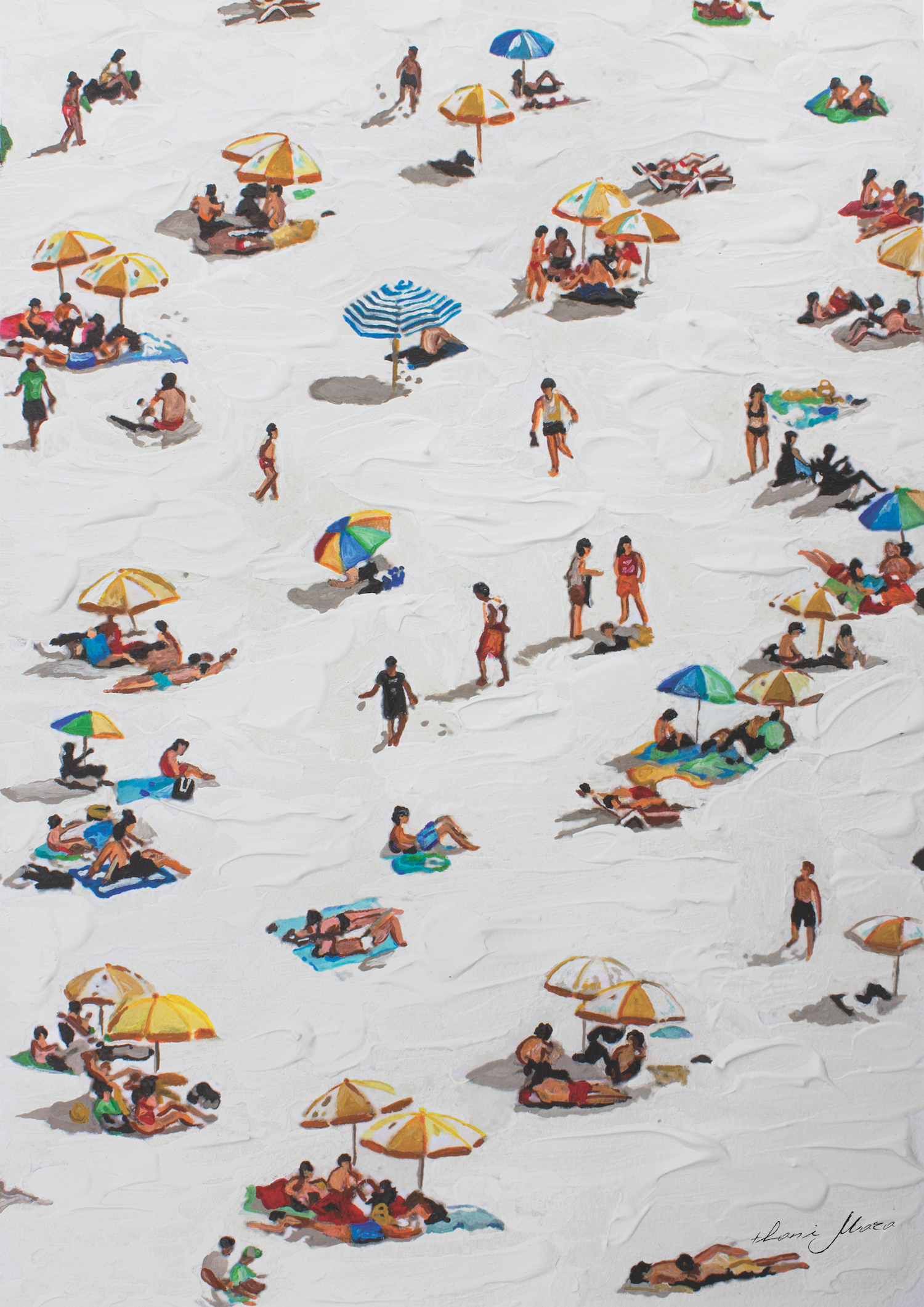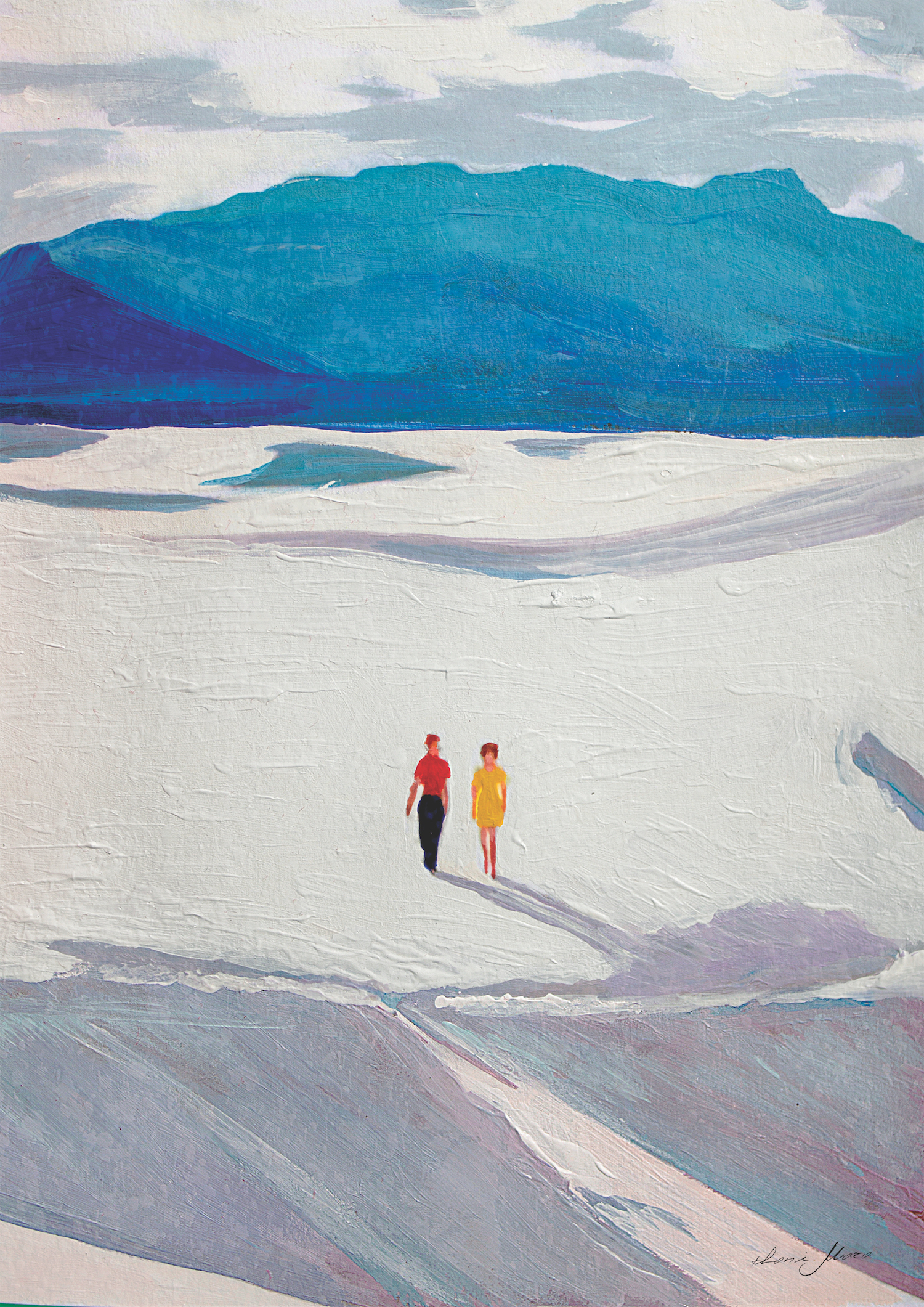THANI MARA - LA DOLCE VITA
LA DOLCE VITA
As she was born on an island it is perhaps not so strange that sea and water are dominant elements in the work of Thani Mara. Life seems sweet to the young Spanish artist who loves all things Seventies.
Thani, where you are from and where do you live today?
I was born in Tenerife, Canary Islands, but also lived for 10 years between Barcelona and Madrid. So, I grew up on an island surrounded by sea and you can see that reflected in my work. I have always been a curious person, which is what made me move to Barcelona and Madrid at some point. And I really liked both cities very much: the variety of the people, the climate, the welcoming atmosphere.
Where and how do you live these days?
Actually, I am just in the process of moving back to Madrid. In Tenerife, I generally used to wakeup early, have my coffee, answer my emails and start working. I also used to go to the sea a lot and, if my work allowed me, tried to spend the afternoons with my friends. The solitude my work as an artist and illustrator requires, clashes with the way I am. I try to balance these two aspects of my life. I am very extroverted. And it takes a lot of effort to stay quiet in one place.
Thani Mara is a beautiful name, but to a non-Spanish speaker, like me, it does not sound very Spanish. Or is it?
Hahaha. No, it is! It also means northern wind in Cherokee. When I was a young girl I didn’t like it,but now I love it. It is so different. I don’t know anyone with a name like mine.
Where did you study?
I studied art, chalcographic engraving and fashion in Tenerife. I never thought of dedicating my life to painting. When I was a little girl I used to draw a lot, and I liked games that required creating things. I also liked ceramics and used to do my own clothing. I have always been an autodidact. But to come tothis profession of painting, I also needed a bit of luck.
You do both illustrations and your own work?
I completely dedicate myself to painting, and once in while do some publicity. Illustration is how I make a living.
How do you find your clients? Or how do they find you?
Instagram is the platform that has given me visibility. The Internet opens a window to the world and my clients reach out to me from all over. This has impacted me a lot. I am more known in the United States than in my own country.
How does it work? Do your clients offer you a brief? Or you have a free hand?
This has changed a lot over the years. In the beginning, I often did what suited the client, including drawing portraits. Today, I exclusively paint what I like and people buy.
For an artist, this is very important because it offers you the freedom to keep creating in a comfortable way, and it allows you to try new things with that little bit of certainty that people like the style you created. At times certain brands ask me to do things, but always in line with my style.
“I have always liked the 1970s, an era with such a remarkable aesthetic. Maybe it is due to the way my parents raised me. I used to listen a lot to the big artists from that era, watched a lot of videos. I am just fascinated by its excess related to image.”
Can you tell us a bit more about your latest work?
My latest work was for a book about new masculinities, in which other artists and I, tried to break stereotypes regarding gender.
You have done a lot of portraits influenced by the 1970s: Hollywood, flower power, big sun glasses etc. Could you tell us a bit more?
I have always liked the 1970s, an era with such a remarkable aesthetic. Maybe it is due to the way my parents raised me. I used to listen to the big artists from that era, watched a lot of videos. I am just fascinated by its excess related to image.
You seem very taken by the spirit of California and the whole idea of Americana. Is it a big inspiration? What else inspires you?
Yes, without a doubt. It was there that I created my first important work and had my first exhibitions. I was, and still am, well known in the States, much more than in Spain, although it fortunately has become more balanced in recent years. Now, I have a lot of work here too. I love the aesthetic of motels, which are places that make me imagine a thousand stories.
I intend to capture the light and the sea in a lighthearted way, which is needed to see the beauty and tranquility in a world that is becoming more ugly every day. I wish my work to be a cure, a vaccine for all the wrongs, without turning my back to it.
Had you not been an artist, what would you have liked to be?
Without a doubt, a singer. Typical, no? Well, anything related to music, really. In fact, for years I wanted to be a sound engineer. I had a lot of instruments at home when I was ateenager. But I was not that good at it, so I quit... for now.
What are the last three records you listened to?
Actually I don’t really listen to whole records. I generally listen to a selection of songs. Although there are many bands of today that I like, I tend to listen to the older ones like Led Zeppelin, Deep Purple Joy Division, The Clash.
What is for dinner tonight?
Tonight I have an event with friends and youknow how these things go. But generallyI eat very light at night. Some yoghurt and small things. I am not very demanding whenit comes to food, but I never say no to pizza!
Big dream?
I have already accomplished many. I have worked with big brands, people have bought my work which I made in total freedom, Zara has a collection with my name on it, I havea suite in Hotel Paradiso in Ibiza with two of my paintings. These are all precious dreams come true. I am very grateful to be able to live from my work and grow as an artist. My biggest dream is to continue doing so, meet interesting people, and maybe have my own clothingline.
INTERVIEWED BY PETER SPEETJENS




